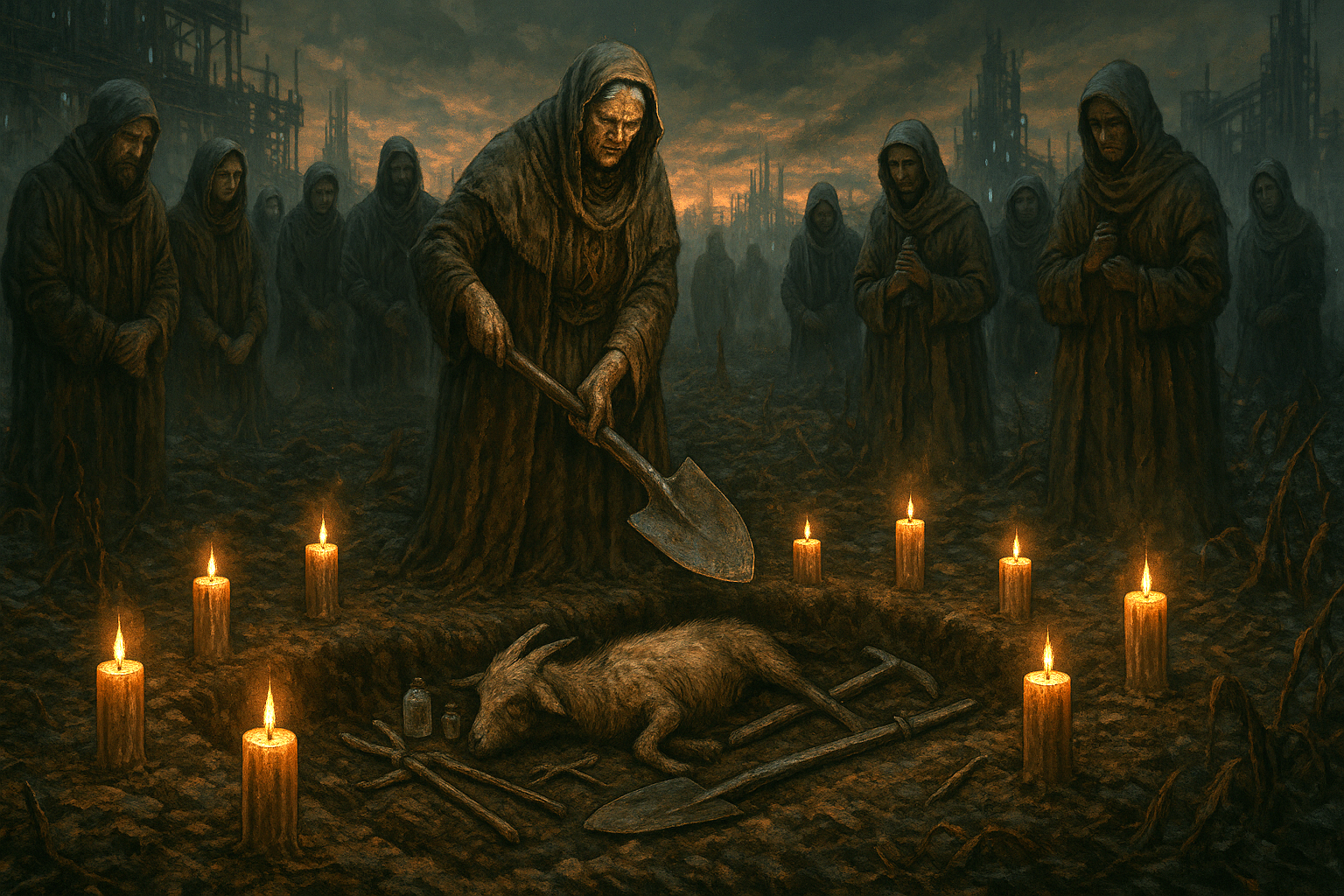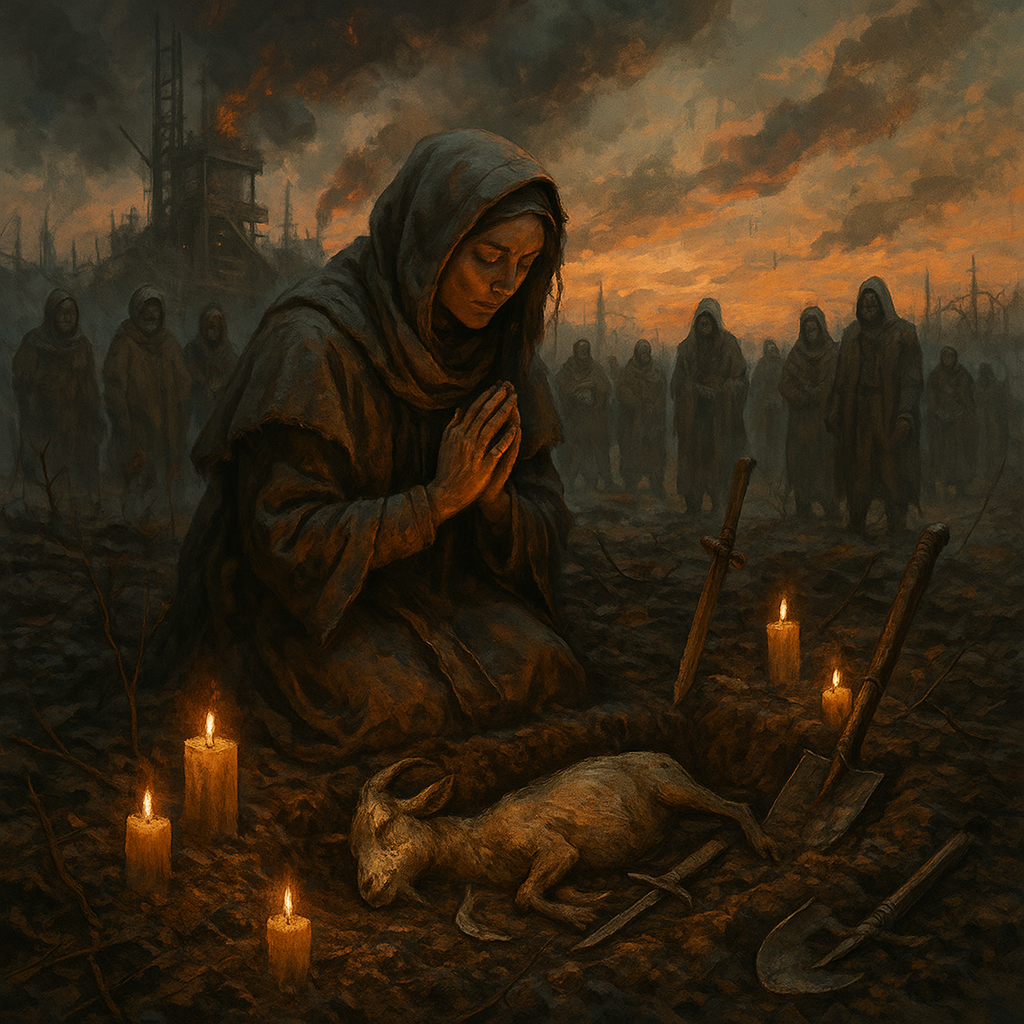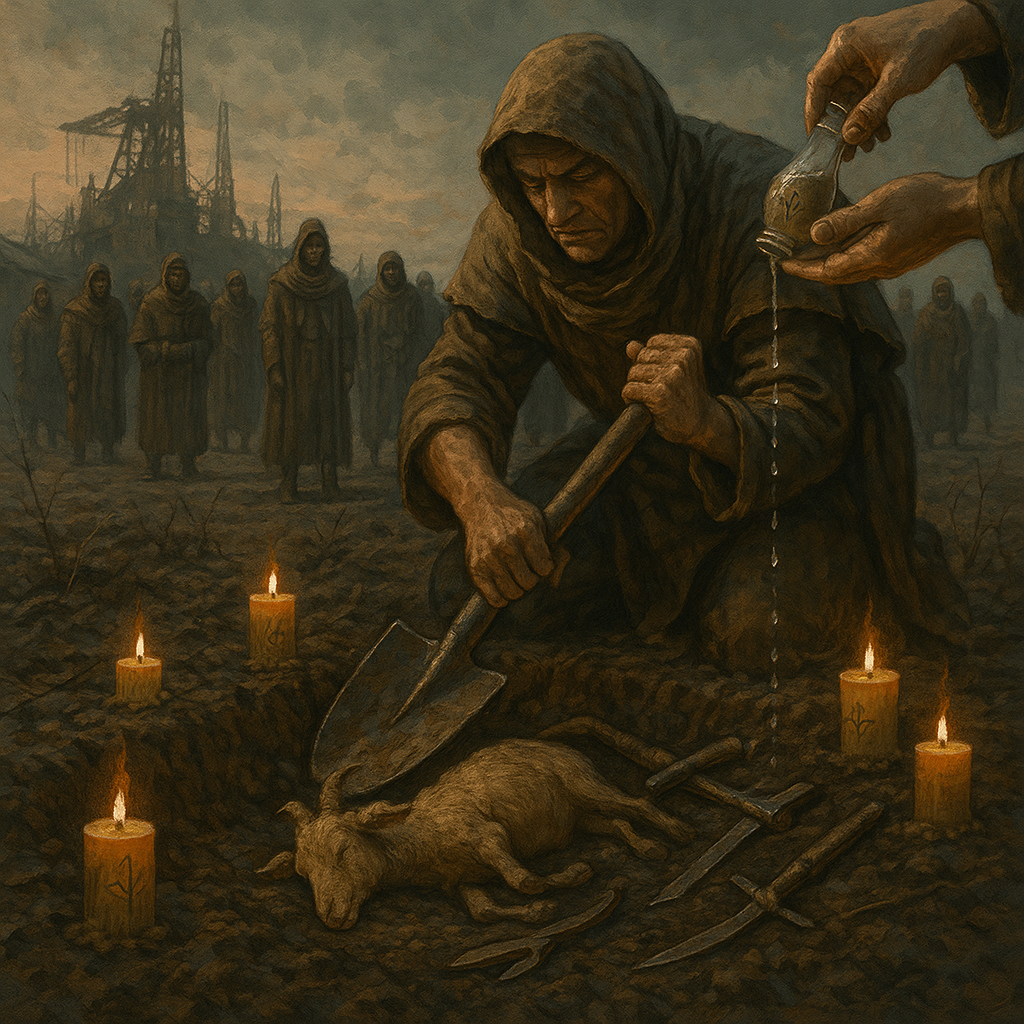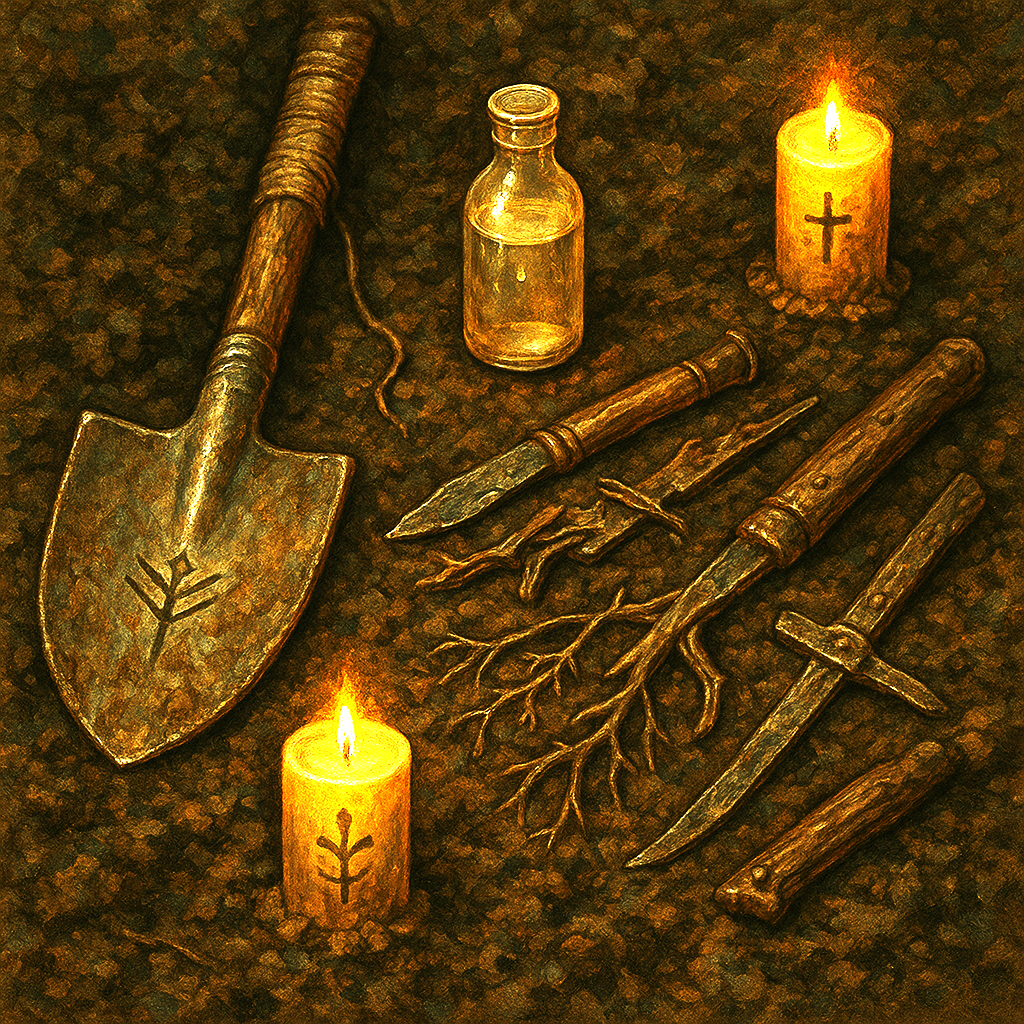The Soil Wake
The soil was dry, cracked, and dusted with the ash of failed growth. At the center of the blighted field, hands worked in solemn rhythm to dig the Wake furrow—no machines, only spades passed hand to hand, each bearer offering a whispered lament. A scrawny goat, throat dyed red with henna, lay still at the furrow’s edge as candles were placed in a wide circle, their flames flickering in the windless dusk. One by one, mourners stepped forward to drop broken tools and pour vials of tears—real or ritual—over the sacrifice, staining the dirt with salt and sorrow. The officiant, draped in a robe stitched with rootlike thread, raised her hands and recited the Prayer of Roots: “Let sorrow sink. Let failure feed. Let rot become rebirth.” As the last word fell, all voices ceased. No song followed, no sermon, only the sound of breathing and the slow sipping of wax as flames flickered in the deepening dark.
Primary Related Location
Related Organizations
Related Ethnicities







Comments